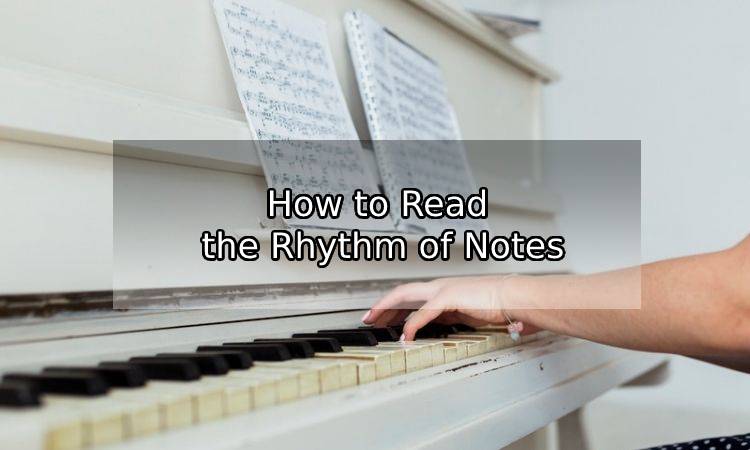Knowing how to determine and play the notes in a piece of music won’t help you determine their rhythm. To play each note with the proper rhythm, you need to know:
- The rhythmic values of notes
- How measures work
- How time signature works
- How tempo works
Types of Notes
All notes are assigned a rhythmic value that indicates the relative duration of the note, or the duration of each note relative to other notes on the staff. For instance, a whole note lasts twice as long as a half note, which in turn lasts twice as long as a quarter note. The specific duration of each note depends on the time signature and tempo of the musical piece. For more on specific types of notes, see How to Read the Notes of the Grand Staff.
Measures
Written music is divided into measures, or groups of notes. Measures, also known as bars, are marked by bar lines, with a double bar line indicating the end of a piece or section.

Time Signature
A time signature is a symbol placed near the beginning of the staff that indicates:
- The number of beats that each measure should contain
- Which type of note (quarter note, half note, and so on) counts as one beat
A beat is the most basic measurement of musical rhythm and in general is roughly equal to a tap of your foot or a clap of your hands. Each measure in a piece of music contains the same number of beats (though not necessarily the same number of notes) as determined by the time signature. The specific duration of each beat in a piece of music depends on the tempo (speed) of the piece. For more on time signatures, see How to Read Time Signatures.
Tempo
The tempo of a piece of music indicates the duration of each beat. The tempo can apply to an entire piece, but more often it changes throughout the piece. In standard notation, tempo indications can include either a general guideline of how quickly or slowly the music should be played, or a precise duration of each beat—many pieces have both types of tempo indications. For specific guidelines on how to play music at the proper tempo, see How to Read and Interpret Tempos in Music.

